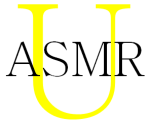 I’m happy to share that I am one of the co-authors of the first published study to show brain activity during ASMR.
I’m happy to share that I am one of the co-authors of the first published study to show brain activity during ASMR.
The study is titled, “An fMRI investigation of the neural correlates underlying the ASMR” and was published by Bryson Lochte, Sean Guillory, Craig Richard, and William Kelley in the journal BioImpacts on September 23, 2018.
One of the biggest questions about ASMR is, “What is happening in the brain?” Although this study doesn’t fully answer that question, it is the first data to provide some direct insights.
Participants quietly layed down in fMRI machines, watched ASMR videos, and their brains were scanned during moments of brain tingling – and then those brain images were compared to moments without brain tingling.
The brain regions that were strongly activated during ASMR were similar to those regions activated when humans, and other animals, perform soothing social behaviors – known as affiliative behaviors. Typical examples of affiliative behaviors include calmly sitting close to each other, touching each other gently, and mutual grooming.
So how exactly was this study done?
 Flo has his Master’s Degree in German and currently teaches German at a college in Paris.
Flo has his Master’s Degree in German and currently teaches German at a college in Paris. William Halimou (Will) is a 4th year undergraduate student at Oberlin College, Oberlin, Ohio, USA. He is a neuroscience major with a strong interest in music composition and ASMR.
William Halimou (Will) is a 4th year undergraduate student at Oberlin College, Oberlin, Ohio, USA. He is a neuroscience major with a strong interest in music composition and ASMR.